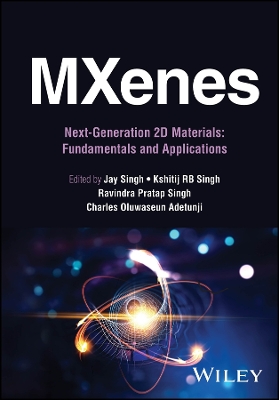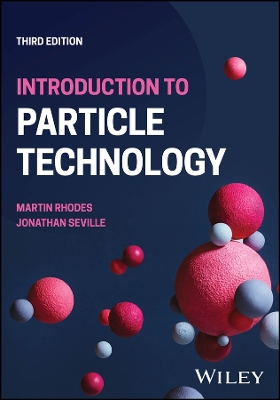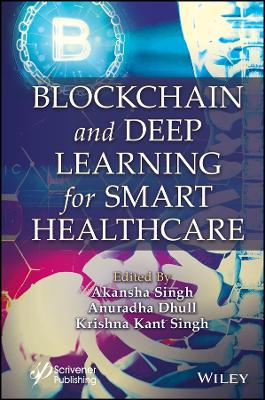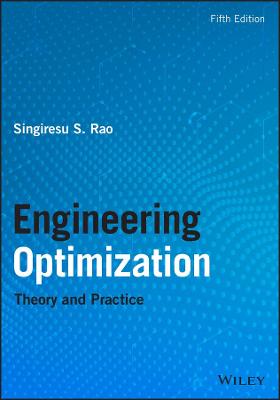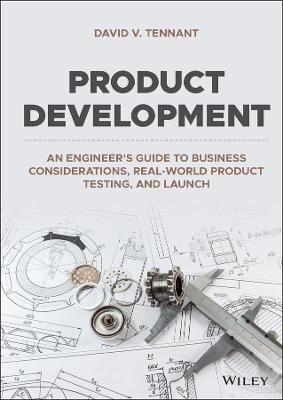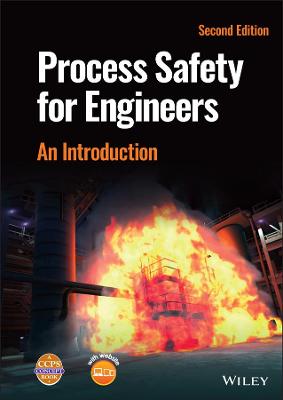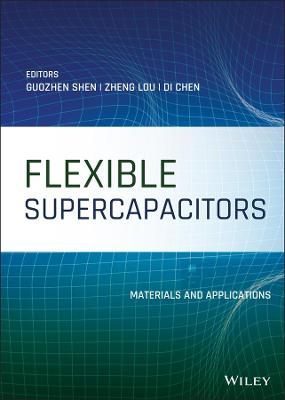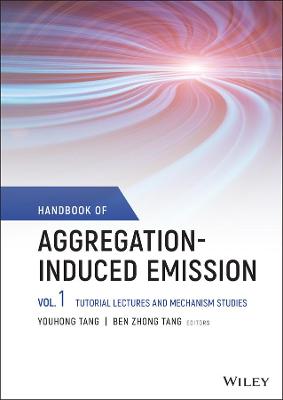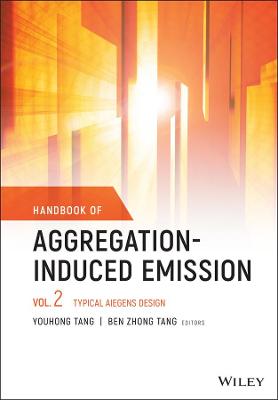Factories of the Future
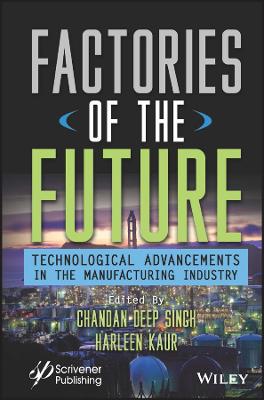 -15%
portes grátis
-15%
portes grátis
Factories of the Future
Technological Advancements in the Manufacturing Industry
Kaur, Harleen; Singh, Chandan Deep
John Wiley & Sons Inc
02/2024
304
Dura
Inglês
9781119864943
15 a 20 dias
666
1 Factories of the Future 1
Talwinder Singh and Davinder Singh
1.0 Introduction 2
1.1 Factory of the Future 3
1.1.1 Plant Structure 3
1.1.2 Plant Digitization 4
1.1.3 Plant Processes 4
1.1.4 Industry of the Future: A Fully Integrated Industry 5
1.2 Current Manufacturing Environment 6
1.3 Driving Technologies and Market Readiness 8
1.4 Connected Factory, Smart Factory, and Smart Manufacturing 11
1.4.1 Potential Benefits of a Connected Factory 13
1.5 Digital and Virtual Factory 13
1.5.1 Digital Factory 13
1.5.2 Virtual Factory 14
1.6 Advanced Manufacturing Technologies 14
1.6.1 Advantages of Advanced Manufacturing Technologies 16
1.7 Role of Factories of the Future (FoF) in Manufacturing Performance 17
1.8 Socio-Econo-Techno Justification of Factories of the Future 17
References 18
2 Industry 5.0 21
Talwinder Singh, Davinder Singh, Chandan Deep Singh and Kanwaljit Singh
2.1 Introduction 22
2.1.1 Industry 5.0 for Manufacturing 22
2.1.1.1 Industrial Revolutions 23
2.1.2 Real Personalization in Industry 5.0 25
2.1.3 Industry 5.0 for Human Workers 28
2.2 Individualized Human-Machine-Interaction 29
2.3 Industry 5.0 is Designed to Empower Humans, Not to Replace Them 31
2.4 Concerns in Industry 5.0 32
2.5 Humans Closer to the Design Process of Manufacturing 35
2.5.1 Enablers of Industry 5.0 36
2.6 Challenges and Enablers (Socio-Econo-Techno Justification) 37
2.6.1 Social Dimension 37
2.6.2 Governmental and Political Dimension 38
2.6.3 Interdisciplinarity 40
2.6.4 Economic Dimension 40
2.6.5 Scalability 41
2.7 Concluding Remarks 42
References 43
3 Machine Learning - A Survey 47
Navdeep Singh and Aanchal Goyal
3.1 Introduction 48
3.2 Machine Learning 49
3.2.1 Unsupervised Machine Learning 50
3.2.2 Variety of Unsupervised Learning 51
3.2.3 Supervised Machine Learning 52
3.2.4 Categories of Supervised Learning 54
3.3 Reinforcement Machine Learning 54
3.3.1 Applications of Reinforcement Learning 56
3.3.2 Dimensionality Reduction 57
3.4 Importance of Dimensionality Reduction in Machine Learning 58
3.4.1 Methods of Dimensionality Reduction 58
3.4.1.1 Principal Component Analysis (PCA) 58
3.4.1.2 Linear Discriminant Analysis (LDA) 59
3.4.1.3 Generalized Discriminant Analysis (GDA) 61
3.5 Distance Measures 61
3.6 Clustering 65
3.6.1 Algorithms in Clustering 67
3.6.2 Applications of Clustering 68
3.6.3 Iterative Distance-Based Clustering 69
3.7 Hierarchical Model 70
3.8 Density-Based Clustering 72
3.8.1 Dbscan 72
3.8.2 Optics 73
3.9 Role of Machine Learning in Factories of the Future 74
3.10 Identification of the Probable Customers 75
3.11 Conclusion 78
References 79
4 Understanding Neural Networks 83
Er. Lal Chand, Sikander Singh Cheema and Manpreet Kaur
4.1 Introduction 83
4.2 Components of Neural Networks 84
4.2.1 Neurons 85
4.2.2 Synapses and Weights 86
4.2.3 Bias 86
4.2.4 Architecture of Neural Networks 86
4.2.5 How Do Neural Networks Work? 87
4.2.6 Types of Neural Networks 88
4.2.6.1 Artificial Neural Network (ANN) 88
4.2.6.2 Recurrent Neural Network (RNN) 89
4.2.6.3 Convolutional Neural Network (CNN) 89
4.2.7 Learning Techniques in Neural Network 90
4.2.8 Applications of Neural Network 90
4.2.9 Advantages of Neural Networks 91
4.2.10 Disadvantages of Neural Network 91
4.2.11 Limitations of Neural Networks 92
4.3 Back-Propagation 92
4.3.1 Working of Back-Propagation 92
4.3.2 Types of Back-Propagation 93
4.3.2.1 Static Back-Propagation 93
4.3.2.2 Recurrent Back-Propagation 93
4.3.2.3 Advantages of Back-Propagation 94
4.3.2.4 Disadvantages of Back-Propagation 94
4.4 Activation Function (AF) 94
4.4.1 Sigmoid Active Function 94
4.4.1.1 Advantages 95
4.4.1.2 Disadvantages 95
4.4.2 RELU Activation Function 95
4.4.2.1 Advantages 96
4.4.2.2 Disadvantages 96
4.4.3 TANH Active Function 96
4.4.3.1 Advantages 97
4.4.3.2 Disadvantages 97
4.4.4 Linear Function 97
4.4.5 Advantages 98
4.4.6 Disadvantages 98
4.4.7 Softmax Function 98
4.4.8 Advantages 98
4.5 Comparison of Activation Functions 98
4.6 Machine Learning 99
4.6.1 Applications of Machine Learning 100
4.7 Conclusion 100
References 101
5 Intelligent Machining 103
Jasvinder Singh, Chandan Deep Singh and Dharmpal Deepak
5.1 Introduction 104
5.2 Requirements for the Developments of Intelligent Machining 104
5.3 Components of Intelligent Machining 105
5.3.1 Intelligent Sensors 106
5.3.1.1 Features of Intelligent Sensors 106
5.3.1.2 Functions of Intelligent Sensors 107
5.3.1.3 Data Acquisition and Management System to Process and Store Signals 111
5.3.2 Machine Learning and Knowledge Discovery Component 113
5.3.3 Database Knowledge Discovery 114
5.3.4 Programmable Logical Controller (PLC) 115
5.3.5 Role of Intelligent Machining for Implementation of Green Manufacturing 117
5.3.6 Information Integration via Knowledge Graphs 118
5.4 Conclusion 119
References 120
6 Advanced Maintenance and Reliability 121
Davinder Singh and Talwinder Singh
6.1 Introduction 121
6.2 Condition-Based Maintenance 122
6.3 Computerized Maintenance Management Systems (CMMS) 124
6.4 Preventive Maintenance (PM) 127
6.5 Predictive Maintenance (PdM) 128
6.6 Reliability Centered Maintenance (RCM) 129
6.6.1 RCM Principles 130
6.7 Condition Monitoring and Residual Life Prediction 131
6.8 Sustainability 133
6.8.1 Role of Sustainability in Manufacturing 134
6.9 Concluding Remarks 135
References 136
7 Digital Manufacturing 143
Jasvinder Singh, Chandan Deep Singh and Dharmpal Deepak
7.1 Introduction 144
7.2 Product Life Cycle and Transition 146
7.3 Digital Thread 148
7.4 Digital Manufacturing Security 150
7.5 Role of Digital Manufacturing in Future Factories 151
7.6 Digital Manufacturing and CNC Machining 152
7.6.1 Introduction to CNC Machining 152
7.6.2 Equipment's Used in CNC Machining 153
7.6.3 Analyzing Digital Manufacturing Design Considerations 153
7.6.4 Finishing of Part After Machining 153
7.7 Additive Manufacturing 154
7.7.1 Objective of Additive Manufacturing 155
7.7.2 Design Consideration 155
7.8 Role of Digital Manufacturing for Implementation of Green Manufacturing in Future Industries 155
7.9 Conclusion 156
References 157
8 Artificial Intelligence in Machine Learning 161
Sikander Singh Cheema, Er. Lal Chand and Bhagwant Singh
8.1 Introduction 162
8.2 Case Studies 162
8.3 Advantages of A.I. in ml 164
8.4 Artificial Intelligence - Basics 166
8.4.1 History of A.I. 166
8.4.2 Limitations of Human Mind 166
8.4.3 Real Artificial Intelligence 166
8.4.4 Artificial Intelligence Subfields 167
8.4.5 The Positives of A.I. 167
8.4.6 Machine Learning 168
8.4.7 Machine Learning Models 168
8.4.8 Neural Networks 169
8.4.9 Constraints of Machine Learning 170
8.4.10 Different Kinds of Machine Learning 171
8.5 Application of Artificial Intelligence 171
8.5.1 Expert Systems 172
8.5.2 Natural Language Processing 172
8.5.3 Speech Recognition 172
8.5.4 Computer Vision 172
8.5.5 Robotics 172
8.6 Neural Networks (N.N.) Basics 173
8.6.1 Application of Neural Networks 173
8.6.2 Architecture of Neural Networks 173
8.6.3 Working of Artificial Neural Networks 175
8.7 Convolution Neural Networks 176
8.7.1 Working of Convolutional Neural Networks 176
8.7.2 Overview of CNN 181
8.7.3 Working of CNN 181
8.8 Image Classification 182
8.8.1 Concept of Image Classification 182
8.8.2 Type of Learning 182
8.8.3 Features of Image Classification 183
8.8.4 Examples of Image Classification 183
8.9 Text Classification 183
8.9.1 Text Classification Examples 183
8.9.2 Phases of Text Classification 184
8.9.3 Text Classification API 186
8.10 Recurrent Neural Network 186
8.10.1 Type of Recurrent Neural Network 187
8.11 Building Recurrent Neural Network 187
8.12 Long Short Term Memory Networks (LSTMs) 190
References 193
9 Internet of Things 195
Davinder Singh
9.1 Introduction 195
9.2 M2M and Web of Things 198
9.3 Wireless Networks 199
9.4 Service Oriented Architecture 203
9.5 Complexity of Networks 205
9.6 Wireless Sensor Networks 205
9.7 Cloud Computing 207
9.8 Cloud Simulators 211
9.9 Fog Computing 214
9.10 Applications of IoT 217
9.11 Research Gaps and Challenges in IoT 220
9.12 Concluding Remarks 223
References 224
10 Product Life Cycle 229
Harpreet Singh, Neetu Kaplas, Amant Sharma and Sahil Raj
10.1 Introduction 230
10.2 Product Lifecycle Management (PLM) 230
10.2.1 Why Product Lifecycle Management? 231
10.2.2 Biological Product Lifecycle Stages 231
10.2.3 An Example Related to Stages in Product Lifecycle Management 233
10.2.4 Advanced Stages in Product Lifecycle Management 234
10.2.5 Strategies of Product Lifecycle Management 235
10.3 High and Low-Level Skimming Strategies/Rapid or Slow Skimming Strategies 236
10.3.1 Considerations in High and Low-Level Pricing 236
10.3.2 Penetration Pricing Strategy 236
10.3.3 Example for Penetration Pricing Strategy 237
10.3.4 Considerations in Penetration Pricing 237
10.4 How Do Product Lifecycle Management Work? 240
10.5 Application Process of Product Lifecycle Management (plm) 241
10.6 Role of Unified Modelling Language (UML) 242
10.6.1 UML Activity Diagrams 243
10.7 Management of Product Information Throughout the Entire Product Lifecycle 244
10.8 PDM System in an Organization 245
10.8.1 Benefits of PDM 245
10.8.2 How Does the PDM Work? 245
10.8.3 The Services of Product Data Management 246
10.9 System Architecture 247
10.9.1 Process of System Architecture 248
10.10 Concepts of Model-Based System Engineering (MBSE) 250
10.10.1 Benefits of Model-Based System Engineering (mbse) 251
10.11 Challenges of Post-COVID 19 in Manufacturing Sector 251
10.12 Recent Updates in Product Life Cycle 252
10.13 Conclusion 253
References 254
11 Case Studies 257
Chandan Deep Singh and Harleen Kaur
11.1 Case Study in a Two-Wheeler Manufacturing Industry 258
11.1.1 Company Strategy 258
11.1.2 Initiatives Towards Technological Advancement 262
11.1.3 Management Initiatives 263
11.1.4 Sustainable Development Goals 265
11.1.5 Growth Framework with Customer Needs 269
11.1.6 Vision for the Future 270
11.2 Case Study in a Four-Wheeler Manufacturing Unit 271
11.2.1 Company Principles 271
11.2.2 Company Objectives 271
11.2.3 Company Strategy and Business Initiatives 272
11.2.4 Technology Initiatives 272
11.2.5 Management Initiatives 273
11.2.6 Quality 275
11.2.7 Sustainable Development Goals 276
11.2.8 Future Plan of Action 280
11.3 Conclusions 281
11.3.1 Limitations 282
11.3.2 Suggestions for Future Work 282
Index 285
1 Factories of the Future 1
Talwinder Singh and Davinder Singh
1.0 Introduction 2
1.1 Factory of the Future 3
1.1.1 Plant Structure 3
1.1.2 Plant Digitization 4
1.1.3 Plant Processes 4
1.1.4 Industry of the Future: A Fully Integrated Industry 5
1.2 Current Manufacturing Environment 6
1.3 Driving Technologies and Market Readiness 8
1.4 Connected Factory, Smart Factory, and Smart Manufacturing 11
1.4.1 Potential Benefits of a Connected Factory 13
1.5 Digital and Virtual Factory 13
1.5.1 Digital Factory 13
1.5.2 Virtual Factory 14
1.6 Advanced Manufacturing Technologies 14
1.6.1 Advantages of Advanced Manufacturing Technologies 16
1.7 Role of Factories of the Future (FoF) in Manufacturing Performance 17
1.8 Socio-Econo-Techno Justification of Factories of the Future 17
References 18
2 Industry 5.0 21
Talwinder Singh, Davinder Singh, Chandan Deep Singh and Kanwaljit Singh
2.1 Introduction 22
2.1.1 Industry 5.0 for Manufacturing 22
2.1.1.1 Industrial Revolutions 23
2.1.2 Real Personalization in Industry 5.0 25
2.1.3 Industry 5.0 for Human Workers 28
2.2 Individualized Human-Machine-Interaction 29
2.3 Industry 5.0 is Designed to Empower Humans, Not to Replace Them 31
2.4 Concerns in Industry 5.0 32
2.5 Humans Closer to the Design Process of Manufacturing 35
2.5.1 Enablers of Industry 5.0 36
2.6 Challenges and Enablers (Socio-Econo-Techno Justification) 37
2.6.1 Social Dimension 37
2.6.2 Governmental and Political Dimension 38
2.6.3 Interdisciplinarity 40
2.6.4 Economic Dimension 40
2.6.5 Scalability 41
2.7 Concluding Remarks 42
References 43
3 Machine Learning - A Survey 47
Navdeep Singh and Aanchal Goyal
3.1 Introduction 48
3.2 Machine Learning 49
3.2.1 Unsupervised Machine Learning 50
3.2.2 Variety of Unsupervised Learning 51
3.2.3 Supervised Machine Learning 52
3.2.4 Categories of Supervised Learning 54
3.3 Reinforcement Machine Learning 54
3.3.1 Applications of Reinforcement Learning 56
3.3.2 Dimensionality Reduction 57
3.4 Importance of Dimensionality Reduction in Machine Learning 58
3.4.1 Methods of Dimensionality Reduction 58
3.4.1.1 Principal Component Analysis (PCA) 58
3.4.1.2 Linear Discriminant Analysis (LDA) 59
3.4.1.3 Generalized Discriminant Analysis (GDA) 61
3.5 Distance Measures 61
3.6 Clustering 65
3.6.1 Algorithms in Clustering 67
3.6.2 Applications of Clustering 68
3.6.3 Iterative Distance-Based Clustering 69
3.7 Hierarchical Model 70
3.8 Density-Based Clustering 72
3.8.1 Dbscan 72
3.8.2 Optics 73
3.9 Role of Machine Learning in Factories of the Future 74
3.10 Identification of the Probable Customers 75
3.11 Conclusion 78
References 79
4 Understanding Neural Networks 83
Er. Lal Chand, Sikander Singh Cheema and Manpreet Kaur
4.1 Introduction 83
4.2 Components of Neural Networks 84
4.2.1 Neurons 85
4.2.2 Synapses and Weights 86
4.2.3 Bias 86
4.2.4 Architecture of Neural Networks 86
4.2.5 How Do Neural Networks Work? 87
4.2.6 Types of Neural Networks 88
4.2.6.1 Artificial Neural Network (ANN) 88
4.2.6.2 Recurrent Neural Network (RNN) 89
4.2.6.3 Convolutional Neural Network (CNN) 89
4.2.7 Learning Techniques in Neural Network 90
4.2.8 Applications of Neural Network 90
4.2.9 Advantages of Neural Networks 91
4.2.10 Disadvantages of Neural Network 91
4.2.11 Limitations of Neural Networks 92
4.3 Back-Propagation 92
4.3.1 Working of Back-Propagation 92
4.3.2 Types of Back-Propagation 93
4.3.2.1 Static Back-Propagation 93
4.3.2.2 Recurrent Back-Propagation 93
4.3.2.3 Advantages of Back-Propagation 94
4.3.2.4 Disadvantages of Back-Propagation 94
4.4 Activation Function (AF) 94
4.4.1 Sigmoid Active Function 94
4.4.1.1 Advantages 95
4.4.1.2 Disadvantages 95
4.4.2 RELU Activation Function 95
4.4.2.1 Advantages 96
4.4.2.2 Disadvantages 96
4.4.3 TANH Active Function 96
4.4.3.1 Advantages 97
4.4.3.2 Disadvantages 97
4.4.4 Linear Function 97
4.4.5 Advantages 98
4.4.6 Disadvantages 98
4.4.7 Softmax Function 98
4.4.8 Advantages 98
4.5 Comparison of Activation Functions 98
4.6 Machine Learning 99
4.6.1 Applications of Machine Learning 100
4.7 Conclusion 100
References 101
5 Intelligent Machining 103
Jasvinder Singh, Chandan Deep Singh and Dharmpal Deepak
5.1 Introduction 104
5.2 Requirements for the Developments of Intelligent Machining 104
5.3 Components of Intelligent Machining 105
5.3.1 Intelligent Sensors 106
5.3.1.1 Features of Intelligent Sensors 106
5.3.1.2 Functions of Intelligent Sensors 107
5.3.1.3 Data Acquisition and Management System to Process and Store Signals 111
5.3.2 Machine Learning and Knowledge Discovery Component 113
5.3.3 Database Knowledge Discovery 114
5.3.4 Programmable Logical Controller (PLC) 115
5.3.5 Role of Intelligent Machining for Implementation of Green Manufacturing 117
5.3.6 Information Integration via Knowledge Graphs 118
5.4 Conclusion 119
References 120
6 Advanced Maintenance and Reliability 121
Davinder Singh and Talwinder Singh
6.1 Introduction 121
6.2 Condition-Based Maintenance 122
6.3 Computerized Maintenance Management Systems (CMMS) 124
6.4 Preventive Maintenance (PM) 127
6.5 Predictive Maintenance (PdM) 128
6.6 Reliability Centered Maintenance (RCM) 129
6.6.1 RCM Principles 130
6.7 Condition Monitoring and Residual Life Prediction 131
6.8 Sustainability 133
6.8.1 Role of Sustainability in Manufacturing 134
6.9 Concluding Remarks 135
References 136
7 Digital Manufacturing 143
Jasvinder Singh, Chandan Deep Singh and Dharmpal Deepak
7.1 Introduction 144
7.2 Product Life Cycle and Transition 146
7.3 Digital Thread 148
7.4 Digital Manufacturing Security 150
7.5 Role of Digital Manufacturing in Future Factories 151
7.6 Digital Manufacturing and CNC Machining 152
7.6.1 Introduction to CNC Machining 152
7.6.2 Equipment's Used in CNC Machining 153
7.6.3 Analyzing Digital Manufacturing Design Considerations 153
7.6.4 Finishing of Part After Machining 153
7.7 Additive Manufacturing 154
7.7.1 Objective of Additive Manufacturing 155
7.7.2 Design Consideration 155
7.8 Role of Digital Manufacturing for Implementation of Green Manufacturing in Future Industries 155
7.9 Conclusion 156
References 157
8 Artificial Intelligence in Machine Learning 161
Sikander Singh Cheema, Er. Lal Chand and Bhagwant Singh
8.1 Introduction 162
8.2 Case Studies 162
8.3 Advantages of A.I. in ml 164
8.4 Artificial Intelligence - Basics 166
8.4.1 History of A.I. 166
8.4.2 Limitations of Human Mind 166
8.4.3 Real Artificial Intelligence 166
8.4.4 Artificial Intelligence Subfields 167
8.4.5 The Positives of A.I. 167
8.4.6 Machine Learning 168
8.4.7 Machine Learning Models 168
8.4.8 Neural Networks 169
8.4.9 Constraints of Machine Learning 170
8.4.10 Different Kinds of Machine Learning 171
8.5 Application of Artificial Intelligence 171
8.5.1 Expert Systems 172
8.5.2 Natural Language Processing 172
8.5.3 Speech Recognition 172
8.5.4 Computer Vision 172
8.5.5 Robotics 172
8.6 Neural Networks (N.N.) Basics 173
8.6.1 Application of Neural Networks 173
8.6.2 Architecture of Neural Networks 173
8.6.3 Working of Artificial Neural Networks 175
8.7 Convolution Neural Networks 176
8.7.1 Working of Convolutional Neural Networks 176
8.7.2 Overview of CNN 181
8.7.3 Working of CNN 181
8.8 Image Classification 182
8.8.1 Concept of Image Classification 182
8.8.2 Type of Learning 182
8.8.3 Features of Image Classification 183
8.8.4 Examples of Image Classification 183
8.9 Text Classification 183
8.9.1 Text Classification Examples 183
8.9.2 Phases of Text Classification 184
8.9.3 Text Classification API 186
8.10 Recurrent Neural Network 186
8.10.1 Type of Recurrent Neural Network 187
8.11 Building Recurrent Neural Network 187
8.12 Long Short Term Memory Networks (LSTMs) 190
References 193
9 Internet of Things 195
Davinder Singh
9.1 Introduction 195
9.2 M2M and Web of Things 198
9.3 Wireless Networks 199
9.4 Service Oriented Architecture 203
9.5 Complexity of Networks 205
9.6 Wireless Sensor Networks 205
9.7 Cloud Computing 207
9.8 Cloud Simulators 211
9.9 Fog Computing 214
9.10 Applications of IoT 217
9.11 Research Gaps and Challenges in IoT 220
9.12 Concluding Remarks 223
References 224
10 Product Life Cycle 229
Harpreet Singh, Neetu Kaplas, Amant Sharma and Sahil Raj
10.1 Introduction 230
10.2 Product Lifecycle Management (PLM) 230
10.2.1 Why Product Lifecycle Management? 231
10.2.2 Biological Product Lifecycle Stages 231
10.2.3 An Example Related to Stages in Product Lifecycle Management 233
10.2.4 Advanced Stages in Product Lifecycle Management 234
10.2.5 Strategies of Product Lifecycle Management 235
10.3 High and Low-Level Skimming Strategies/Rapid or Slow Skimming Strategies 236
10.3.1 Considerations in High and Low-Level Pricing 236
10.3.2 Penetration Pricing Strategy 236
10.3.3 Example for Penetration Pricing Strategy 237
10.3.4 Considerations in Penetration Pricing 237
10.4 How Do Product Lifecycle Management Work? 240
10.5 Application Process of Product Lifecycle Management (plm) 241
10.6 Role of Unified Modelling Language (UML) 242
10.6.1 UML Activity Diagrams 243
10.7 Management of Product Information Throughout the Entire Product Lifecycle 244
10.8 PDM System in an Organization 245
10.8.1 Benefits of PDM 245
10.8.2 How Does the PDM Work? 245
10.8.3 The Services of Product Data Management 246
10.9 System Architecture 247
10.9.1 Process of System Architecture 248
10.10 Concepts of Model-Based System Engineering (MBSE) 250
10.10.1 Benefits of Model-Based System Engineering (mbse) 251
10.11 Challenges of Post-COVID 19 in Manufacturing Sector 251
10.12 Recent Updates in Product Life Cycle 252
10.13 Conclusion 253
References 254
11 Case Studies 257
Chandan Deep Singh and Harleen Kaur
11.1 Case Study in a Two-Wheeler Manufacturing Industry 258
11.1.1 Company Strategy 258
11.1.2 Initiatives Towards Technological Advancement 262
11.1.3 Management Initiatives 263
11.1.4 Sustainable Development Goals 265
11.1.5 Growth Framework with Customer Needs 269
11.1.6 Vision for the Future 270
11.2 Case Study in a Four-Wheeler Manufacturing Unit 271
11.2.1 Company Principles 271
11.2.2 Company Objectives 271
11.2.3 Company Strategy and Business Initiatives 272
11.2.4 Technology Initiatives 272
11.2.5 Management Initiatives 273
11.2.6 Quality 275
11.2.7 Sustainable Development Goals 276
11.2.8 Future Plan of Action 280
11.3 Conclusions 281
11.3.1 Limitations 282
11.3.2 Suggestions for Future Work 282
Index 285

